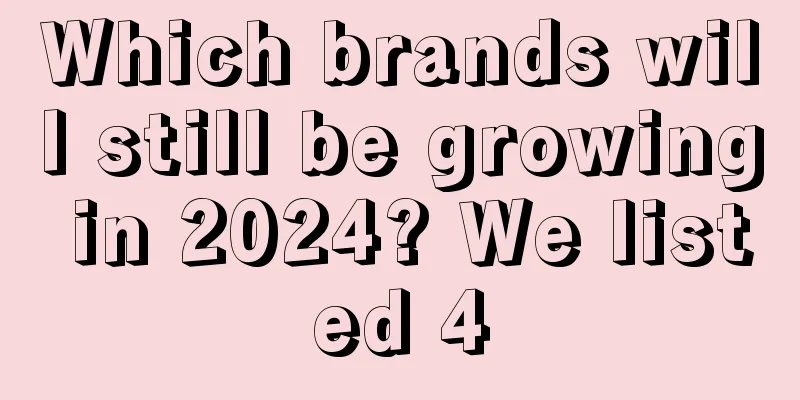Games + learning, the secret behind Duolingo's 97.6 million monthly active users

Amid the social media and video games, an educational software has quietly become popular. A cute and naughty mascot named Duoer, plus a language course that is like a game. This learning software called Duolingo is attracting 97.6 million monthly active users around the world. In an era of dopamine rush, it is inhumane to ask users to withdraw from the "comfort zone" of various entertainment software and devote themselves to the arduous learning process. In April last year, Duolingo founder Luis von Ahn explained his understanding in a TED speech: "Trying to provide education with smartphones is like expecting people to eat broccoli - but next to the broccoli, you put the most delicious dessert ever." The way traditional education programs solve this problem is to "take dessert off the table" - Pomodoro timers, forced locks, and non-entertainment learning machines. Programmers have worked hard to create various mechanisms to separate learning software from entertainment software. Duolingo, however, has taken a different approach and tried to "make broccoli taste more like dessert" - it "uses the same psychological techniques as applications such as Instagram, Tiktok, or mobile games" to try to make learning a form of entertainment. When the game process is integrated into learning, do learners really buy in? Can people really learn new things in the process? Is gamified learning a new possibility for "learning through entertainment"? 01 Make learning like playing gamesOn an ordinary morning, Tian Xiaoming turned on his mobile phone by the bed. In the desktop widget, Duolingo's mascot "Duo'er" was lazily lying on a blue background and acting cute: "Why don't you check in? You are bad!" In the afternoon, the widget icon turned pink, and Duo'er began to act coquettishly, "Come and learn one~" If Xiaoming still hasn't checked in at night, the widget icon will turn red, and Duo'er will scream in fear - "There is no time!" At the same time, another character "Zhajie" also began to "be sarcastic" in the mobile phone text message: It's me, Zhajie. Have you practiced English? Humph, I knew it! Duo'er thought you were so cool! "When the icon turns red, I feel like I have to learn it. A Duolingo lesson is very short and I can basically finish it during my commute." Xiao Ming, who has a 226-day winning streak on Duolingo, told Hedgehog Commune, "Once I went to Ulanqab for fun and my good friend was taking photos next to me, so I took a Duolingo lesson. My friend thought it was fun and took a photo of my check-in and the volcano together." From the winning streak that Tian Xiaoming was reluctant to break, to the tasks, medals, ranking system, to the cartoon characters, electronic sound effects, and vibration feedback, Duolingo uses a complete set of game mechanisms to retain users' hearts. Every time the user answers a question correctly, he or she will receive an enthusiastic "Great!" and animated encouragement from a cartoon character; if the user answers 5 questions correctly, Duoer will fly up from the bottom of the screen to celebrate your "five correct questions in a row!"; if the user learns ten new words, Duoer will poke his or her head from the side of the screen and say "learned ten new words!"; after completing a class, the winning streak will continue for the day, but there are still daily tasks waiting for you to complete; if the user completes three daily tasks, Duolingo will give you a small prop that doubles your experience for 15 minutes, helping you to ride the wind and waves and climb to the top of the experience rankings. "From a user's perspective, I can understand that Duolingo gives experience items at just the right time, hoping that you can learn two more lessons." Lu Na, who saw through Duolingo's "tricks" early on, still used up the double experience time every day, completed the tasks, and maintained her rank. On the most "diligent" day, in order to complete the tasks and improve the ranking, she gained more than a thousand experience points in Duolingo. In the normal experience mode, this means that she needs to complete about 67 lessons. Where there are games, there are shortcuts. In order to keep his rank on the leaderboard, Tian Xiaoming has his own trick: "The leaderboard is actually automatically generated according to the time you start learning on Monday. At the beginning, I opened Duolingo at 7 or 8 in the morning. Everyone in this group had a lot of experience. If I wanted to keep my rank, I had to learn more. Later, I found that if I joined the group around 12 o'clock and opened the leaderboard at this time, everyone's experience was only about 20 at the same rank, and I could easily surpass them." Tian Xiaoming is a player who found some "strategies" based on his intuition. On social media, the real "big guys" are systematically generating replicable gameplay: using double experience props according to the time, and going straight to the review questions with the highest experience; although they are all reviews, they cannot be selected randomly, and only the stages that can gain the most experience in the shortest time are done; of course, it is also important to avoid the "King of Roll List" generated on Monday morning. Duolingo ranking system (Source: Duolingo Wiki) What is the difference between diligently checking guides and going to Duolingo to get higher ranks and diligently playing games to get higher ranks? Duolingo's advantage is that it provides people with a sense of "meaning", a comfort of "learning today". As Lewis said at TED: "When you learn, you gain meaning... An educational product can be only 80% or 90% as attractive as TikTok, because the rest will be provided by people's internal motivation." 02 The potential for game mechanic iterationFrom the little red flowers awarded by teachers in kindergarten, to the "honor roll" hanging in the most conspicuous place in the school, to the check-in, ranking, and medal system in every self-discipline software, they all clearly use the same mechanism - gamification can increase learners' participation rate, which has long been an open human code. Duolingo shows us the huge potential behind "better game mechanisms". It tells a story about growth with its own version iteration. The reason why this story is fascinating is that gamification can drive a mature product to usher in a "second spring" of rapid growth through a small number of changes. "By mid-2018, Duolingo's daily active user growth rate had dropped to single digits per year, which was a big problem for us given its previous explosive growth," said Jorge Mazal, Duolingo's former CPO, in Lenny's Newsletter. In the two options of attracting new users and promoting activation, the Duolingo team once tried to copy Uber's referral program and encourage users to "bring new users" by giving away memberships, but this attempt only increased their user base by 3%. Since attracting new users didn't work, Duolingo turned to promoting activation. This direction seemed more promising because at the time, "compared with top digital games, Duolingo's user retention rate was not high enough... gamification had not yet reached its maximum power." Therefore, the Duolingo team began to work hard on "making it more fun" and "making it easier." In 2019, Duolingo iterated on the winning streak, and users only needed to complete a simple lesson to maintain the winning streak; Then, Duolingo Art Director Greg Hartman was inspired by his love for Zelda characters and designed a series of characters with his team, adding some strange characteristics to them, so that users can establish a deep emotional connection with Duolingo characters just like playing games. Some Duolingo roles In 2022, Duolingo upgraded the learning path of the entire software. This upgrade changed learning from a process that required self-planning to a single-path process. This simple change has given Duolingo's language courses a concise path. As long as learners follow the established route, they can reach simple and clear achievement nodes. By the fourth fiscal quarter of 2022, Duolingo's daily active users increased by 62% year-on-year, and monthly active users increased by 43%. According to George's statistics, after the ranking function was launched, the overall learning time of users increased by 17%, the number of users who spent at least one hour five days a week increased by 2 times, and the current user retention rate has also increased significantly in a statistical sense. In the design of the winning streak, simple notifications, animations, calendar views, winning streak freezing props and winning streak rewards have greatly improved user retention. He also publicly announced in 2023: The gamification mechanism, together with several other efforts in the product and marketing fields, helped Duolingo increase its daily active users by 4.5 times from 2018 to 2022. This strong user growth has driven Duolingo's initial public offering in 2021. In addition to gamification, the COVID-19 pandemic between 2018 and 2022 also created new growth points for this home language learning tool. Taking the fourth quarter data as an example, Duolingo's monthly active users have been growing slowly since 2016, and this rate has increased significantly after 2019; in 2023, gamified content combined with generative AI, social media marketing, family subscription system and other innovations have brought Duolingo's monthly active users to a historical high. Active users do not want to spend too much time on advertisements during courses, but need more props and benefits to help them gain experience and other benefits, so they need to register as members. Since 2021, Duolingo membership subscription revenue has accounted for more than 70% of total revenue; the absolute value of membership subscription revenue has also been growing. By the first fiscal quarter of 2024, this value is more than three times that of three years ago. In addition, the epidemic has caused the closure of offline test centers for language tests such as IELTS and TOEFL, which has also provided space for the development of Duolingo's online language test. Even if users do not pay a penny for Duolingo, they can still learn all the course content. In the words of founder Louis, this payment mechanism is "a small-scale form of wealth redistribution. We’re essentially getting the rich to pay for education for everyone. So I like it.” The data is the current actual revenues. 03 Do educational products have to be useful?Despite its impressive commercial success, we still have to ask: Is Duolingo really effective as a learning software? In order to be more fun and for commercial development, Duolingo's mechanism has some obvious disadvantages in education: the class hours are short and the content it can carry is limited; in order to allow users to quickly gain a sense of accomplishment, many languages do not have systematic vocabulary and grammar explanations; in order to ensure memory in simple learning, there is a large amount of repetitive content, and users may only learn a few words over and over again; in order to maintain repetitive course design while ensuring personnel efficiency, some examples rely on AI generation, and some materials are very stiff. There are 125 answers to the Zhihu question "Is Duolingo good?" Most users think that this software has no advantage in helping systematic language learning. One anonymous user commented: "After using it for more than half a month, I feel that this app is just a game software to assist learning, and it cannot be used for real learning." Since it is not the most efficient solution, why do users choose to stay? When Tian Xiaoming was on exchange in Poland, he found something very interesting: "One day I got up early to go to class. Other dormitory aunties might be resting, and I saw an aunt sitting on the sofa, learning English with Duolingo"; when I was on exchange in San Francisco, I played street chess with local homeless people, and they would also say "Hello, hello" to me in Chinese learned from Duolingo. There are approximately 399 million Duolingo users whose first language is English; the United States is the country with the largest number of Duolingo users, and American users account for approximately 25.07% of the total number of users worldwide. Unlike Chinese people who learn English, a large part of the people Duolingo targets do not have a need to learn a language, but just take language learning as a hobby. When you want to use language learning as a daily pastime, what software is more suitable than Duolingo, which is like a game? Lu Na, who chose Duolingo as the research topic of his undergraduate thesis, believes that "Duolingo is the best and most suitable language software for beginners that I have seen so far. Its course design is not very exam-oriented, but a learner with interest can quickly capture the fun of it. Its progress is well adaptive and can better match your initial level. " If you want to learn some interesting niche languages or dialects, Duolingo is almost the easiest place for you to access systematic courses. On Duolingo, an English user can learn not only dialect variants such as Cantonese and Haitian French, but also niche and endangered languages such as Hawaiian, Navajo, Welsh, and even fictional languages from fantasy worlds such as "Star Trek" and "Game of Thrones." Even those who need to learn a language systematically may regard Duolingo as a "dessert before a meal" and use it in conjunction with other software to form a "combination punch". At the end of 2022, Luna decided to study abroad in Japan, and that was when she started to learn Japanese with Duolingo. "I think it is an opportunity for you to accept systematic learning, rather than using it completely as a tool for systematic learning. I think its course difficulty and course progress cannot meet (the requirements of systematic learning)." As an auxiliary software, Duolingo acted as a little sweet cookie in her process of learning Japanese-it has a very instant feedback system, which makes her full of a sense of accomplishment of "learning today", so as to maintain a continuous enthusiasm for learning languages. After punching her card today, she will also send a Duoer emoticon to her friends to "track down" the other party's punch-in progress. The content ecology outside the Duolingo software is also bringing social happiness to learners. Since Duolingo is the world's largest language learning software, offering courses in 43 languages and covering 194 countries, the social value it provides is often global. When you stumble and chat with foreigners using the sentences you learned from Duolingo, they may also stumble and chat with you using the Chinese they learned from Duolingo. After becoming friends with learners from other countries, you may also talk about the little green bird that unifies the world - it sometimes suffers from hay fever, sometimes chases humans on the street, sometimes is "killed" by humans by being made into fried chicken in KFC, and sometimes turns into a boss of an otome game on the streets of Japan... Duolingo Japanese street marketing (Source: Weibo) Take it from Duolingo and use it in different neighboring countries. Use the language learned in Duolingo to chat with Duolingo users in other countries. The content of the chat is the fancy encouragement to learn on Duolingo’s social media, and finally it becomes a mutual urging to check in on Duolingo. The same world, the same love-hate relationship with Duolingo. In this weird closed learning loop, users may really learn something; but the happiness and sense of meaning gained from learning and socializing are the "ultimate secret" of Duolingo users. References:
|
<<: With the European Cup approaching, can Chinese overseas brands still reap the benefits?
>>: New tea brands are entering Northeast counties
Recommend
Three years of empty fire cannot create a future for virtual people
In recent years, virtual humans have appeared in t...
Is a higher Amazon sell-through rate better? How can Amazon improve its performance?
Many merchants on Amazon are concerned about the s...
What are the requirements for opening a Shopee store? How much does it cost?
The cross-border e-commerce industry is still very...
Kudi Coffee, which is trying to copy Luckin Coffee, needs to improve its product strength and strengthen its brand marketing
Recently, we can always see Kudi Coffee on Douyin,...
The elderly live broadcast in the early morning, selling both pity and goods
This article analyzes the common characteristics o...
Recharge exceeded 23 million in one day, and revenue exceeded 100 million in 8 days. Is the first year of paid short dramas here?
Nowadays, the popularity of short dramas is gettin...
What is the Amazon Account Status Protection Program? Details
Amazon sellers can use the newly upgraded "Ac...
After earning 600,000 yuan in two courses, "Crazy Xiao Yang Ge" has made new moves
In the wave of live streaming e-commerce, "Cr...
KFC plays "price temptation" on Crazy Thursday: The truth behind the anchoring effect
It seems that it is not unfamiliar for brands to u...
WeChat stores, the end is a crash
The launch of WeChat Stores is seen as the rekindl...
A formal way to quickly increase sales on Xiaohongshu
How to convert and quickly increase sales on Xiaoh...
Five common senses to get through the new consumer brand positioning
The article proposes five common senses, opening u...
TOB customer portrait foundation - label system
Everyone is already familiar with the term custome...
Shopee China Seller Center Live Data Dashboard Newly Upgraded
In 2023, cross-border e-commerce has set off a liv...
What is the process and cost of opening a store on Amazon? How much money is needed to open a store on Amazon?
Now more and more people want to enter cross-borde...









